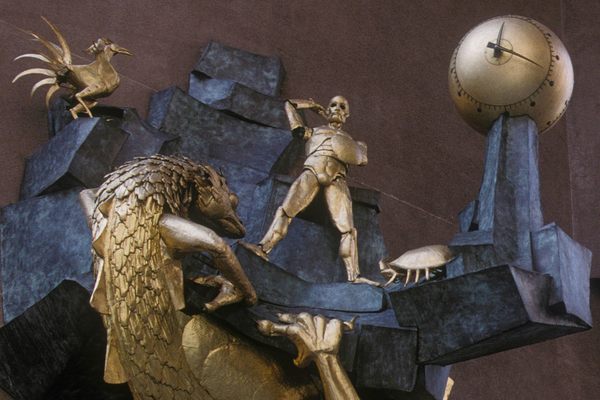Wonder Is Everywhere: A Jumping Japanese Cryptid, Ancient Amazonian Cities, and More From Around the Web
Get a peek into what we’re obsessed with right now.
Wonder is everywhere. That’s why, every other week, Atlas Obscura drags you down some of the rabbit holes we encounter as we search for our unusual stories. We highlight surprising finds, great writing, and inspiring stories from some of our favorite publications.

How Spotify Made Nigerian Music a Global Phenomenon
by Damilare Dosunmu, Rest of World
Working with artists in Nigeria, Sweden-based music streaming service Spotify has exposed Afrobeats—a genre of pop music with driving drum beats popular throughout West Africa—to a worldwide audience, with 14 billion plays of the tunes in 2023 led by music lovers in Paris, London, and Nairobi.
Can a Cryptid Revitalize a Dying Japanese Village?
by Taiga Iyama, Japan Times
Four decades ago the hunt for tsuchinoko, fanged, snake-like creatures that can jump six feet in the air and sometimes speak, often to lie—brought fame to the village of Shimokitayama in Nara Prefecture, Japan. Now the town’s 800 residents are hoping the cryptid can save the local economy.
Building Soccer Fields Out of WWII Bomb Destruction
by Jonathan Gardner, The Conversation
The bombs that rained down on London during World War II killed tens of thousands of people—and produced millions of tons of rubble. Something had to be done with all the debris. One solution, archaeologist Jonathan Gardner has discovered, was to turn the disaster into opportunity: The Hackney Marshes of East London were infilled to create 135 soccer fields.

Laser Mapping Reveals Oldest Amazonian Cities
by Lizzie Wade, Science
Hidden in the rainforests of Ecuador’s Upano Valley are the remnants of a dense network of interconnected cities that thrived 2,500 years ago. The settlements, discovered using lidar, a laser mapping technology that allows scientists to see through the forest cover, are 1,000 years older than any others known to exist in the Amazon.
Evidence of Ancient Water Burial Ritual Found in Poland
by Jennifer Nalewicki, LiveScience
Last year, more than 500 pieces of Bronze Age jewelry were discovered in a dried-out lake bed in Poland by metal detectorists. Archaeologists now believe it was left by members of the Chełmno group, a community that lived in the region from roughly 1200 to 450 B.C. The metal artifacts say a lot about the community’s burial practices.

It’s (Almost) Time to Say Goodbye to That Weird Gas Station Under a Rosslyn Church
by Margaret Barthel, DCist
More than half a century ago, a smart business deal birthed an unexpected landmark in the Washington, D.C., suburbs: “Gas ’n’ god,” as it is sometimes known, a church built on top of a gas station. But soon, the structure will be demolished to make way for neighborhood redevelopment. Plans for the new construction include both a church and a gas station, but the two are, sadly, merely adjacent to one another.
French Tourist Finds 7.46-Carat Diamond at Arkansas State Park
by Sarah Kuta, Smithsonian Magazine
Arkansas’ Crater of Diamonds State Park—the only diamond mine in the world open to the public—is “a magical place,” says Julien Novas, a tourist from France who recently discovered a 7.56-carat diamond in the mud there.




































Follow us on Twitter to get the latest on the world's hidden wonders.
Like us on Facebook to get the latest on the world's hidden wonders.
Follow us on Twitter Like us on Facebook